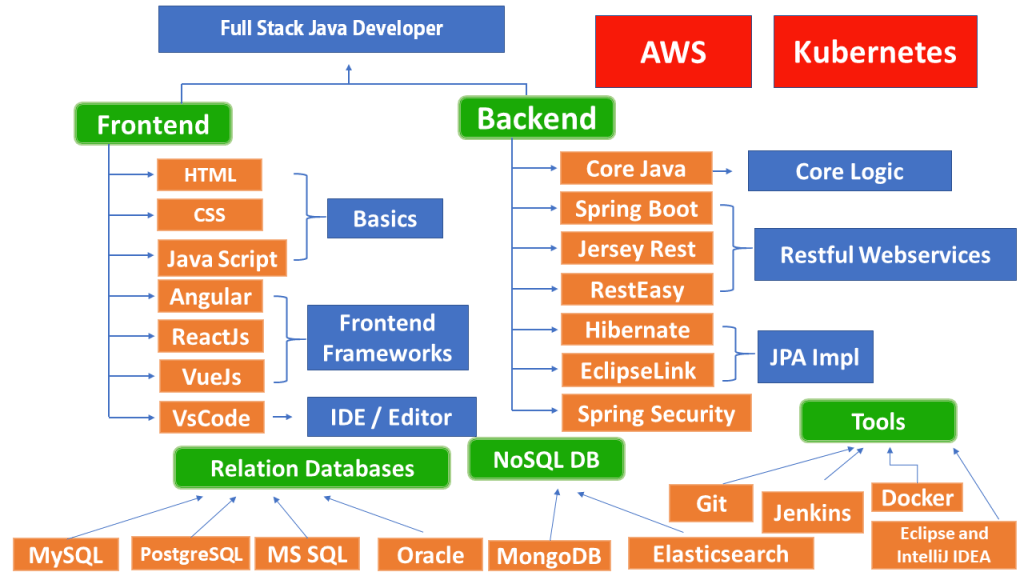Introduction
Becoming a Full Stack Java Developer in just 10 days may sound like a daunting challenge, but with dedication, a structured plan, and the right resources, it’s entirely possible. In this article, we’ll outline a step-by-step guide to help you achieve this ambitious goal. Keep in mind that while you can gain a solid understanding of Full Stack Java development in 10 days, becoming a true expert will require ongoing practice and learning.

Day 1: Getting Started
- Setting Up Your Environment
- Install Java Development Kit (JDK)
- Download and install an Integrated Development Environment (IDE) like Eclipse or IntelliJ IDEA.
- Basic Java Concepts
- Learn Java syntax, variables, data types, and basic programming constructs.
- Write your first Java program.
Day 2: Object-Oriented Programming (OOP)
- Understanding OOP Principles
- Learn about classes and objects.
- Study concepts like inheritance, polymorphism, encapsulation, and abstraction.
- Java Classes and Objects
- Create your own Java classes and objects.
- Implement basic OOP concepts in Java.
Day 3: Database Fundamentals
- Relational Databases
- Understand the basics of relational databases.
- Learn SQL and how to perform CRUD operations (Create, Read, Update, Delete).
- Database Connectivity
- Explore Java Database Connectivity (JDBC).
- Write Java code to connect to a database and execute SQL queries.
Day 4: Front-End Development
- HTML and CSS
- JavaScript
- Study JavaScript for interactivity and dynamic web content.
- Write simple JavaScript code for your webpage.
Day 5: Back-End Development with Java
- Servlets and JSP
- Explore Java Servlets for handling HTTP requests.
- Create dynamic web pages using JavaServer Pages (JSP).
- Web Application Deployment
- Set up a web server (e.g., Apache Tomcat) and deploy your web application.
Day 6: Restful APIs and Web Services
- Introduction to REST
- Understand the principles of Representational State Transfer (REST).
- Create RESTful web services using Java.
Day 7: Frameworks
- Spring Framework
- Get familiar with the Spring Framework for building robust and scalable applications.
Day 8: Version Control and Collaboration
- Git
- Learn the basics of Git for version control.
- Create a GitHub account and collaborate with others.
Day 9: Testing and Debugging
- Unit Testing
- Explore JUnit for unit testing your Java code.
- Write and run test cases.
- Debugging
- Learn debugging techniques to troubleshoot code issues.
Day 10: Continuous Learning
- Stay Updated
- Full Stack development is an ever-evolving field. Keep up with the latest trends and updates.
- Build Projects
- Apply what you’ve learned by working on projects.
Conclusion
Becoming a Full Stack Java Developer in 10 days requires intense dedication and focused learning. While you can gain a foundational understanding, it’s essential to continue your journey through continuous practice and learning. As you build more projects and gain practical experience, your skills will further evolve, ultimately making you a proficient Full Stack Java Developer.
